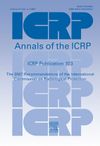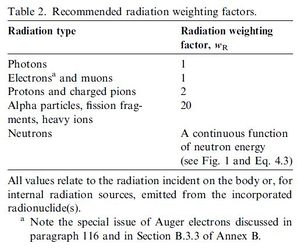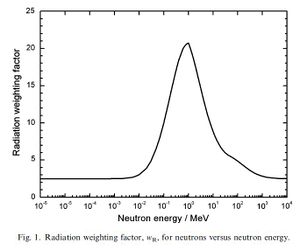Difference between revisions of "Absorbed, Equivalent, and Effective Dose"
Jump to navigation
Jump to search
m (1 revision imported) |
(→See Also) |
||
| Line 229: | Line 229: | ||
<li style="display: inline-block; vertical-align: top;"> | <li style="display: inline-block; vertical-align: top;"> | ||
| − | [[File:Pub103Cover.jpg|thumb|none| | + | [[File:Pub103Cover.jpg|thumb|none|100px|link=ICRP Publication 103 | |
| − | <center>[ | + | <center>[[ICRP Publication 103]] The 2007 Recommendations of ICRP</center>]] |
</li> | </li> | ||
</ul> | </ul> | ||
</div> | </div> | ||
Revision as of 00:41, 7 March 2019
Radiation dose is a measure of the amount of exposure to radiation. There are three kinds of dose in radiological protection. Absorbed dose is a measureable, physical quantity, while equivalent dose and effective dose are specifically for radiological protection purposes.
Effective dose in particular is a central feature of radiological protection. It sums up any number of different exposures into a single number that reflects, in a general way, the overall risk. The concept may be complex, but it makes radiological protection practical to implement.
|
|
|
More Details
[see more/less]
Quotes from ICRP Publications
[see more/less]
![]() Read on to learn about Dose Limits
Read on to learn about Dose Limits
See Also
-

ICRP Publication 103 The 2007 Recommendations of ICRP




